
A tabloid is a newspaper with a compact page size smaller than broadsheet. There is no standard size for this newspaper format.

The media of Canada is highly autonomous, uncensored, diverse, and very regionalized. Canada has a well-developed media sector, but its cultural output—particularly in English films, television shows, and magazines—is often overshadowed by imports from the United States. As a result, the preservation of a distinctly Canadian culture is supported by federal government programs, laws, and institutions such as the Canadian Broadcasting Corporation (CBC), the National Film Board of Canada (NFB), and the Canadian Radio-television and Telecommunications Commission (CRTC).

Print circulation is the average number of copies of a publication. The number of copies of a non-periodical publication are usually called print run. Circulation is not always the same as copies sold, often called paid circulation, since some issues are distributed without cost to the reader. Readership figures are usually higher than circulation figures because of the assumption that a typical copy is read by more than one person.
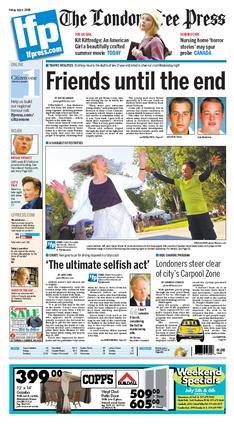
The London Free Press is a daily newspaper based in London, Ontario, Canada. It has the largest circulation of any newspaper in Southwestern Ontario.
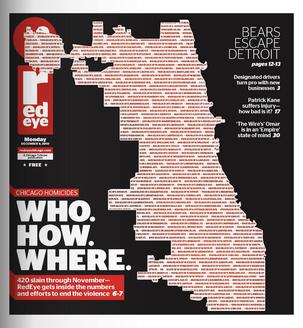
RedEye was a publication put out by the Chicago Tribune geared toward 18 to 34-year-olds. It was published every weekday since its inception in 2002 until February 3, 2017. Publication was reduced to weekly starting February 9, 2017. Daily circulation was 250,000 as of December 2, 2009. The final issue was published March 19, 2020, a coronavirus edition.
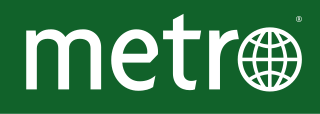
Metro International is a Swedish media company based in Luxembourg that publishes the freesheet newspaper Metro.

Metro is a British freesheet tabloid newspaper published by DMG Media. The newspaper is distributed from Monday to Friday mornings on public places in areas of England, Wales and Scotland. Copies are also handed out to pedestrians. In 2018, Metro overtook The Sun to become the most circulated newspaper in the United Kingdom.
The Georgia Straight is a free Canadian weekly news and entertainment newspaper published in Vancouver, British Columbia, by Overstory Media Group. Often known simply as The Straight, it is delivered to newsboxes, post-secondary schools, public libraries and a large variety of other locations. The Straight has a long history of independent, unconventional editorials and content, and is known as a vocal critic of government, notably the former Liberal government of Gordon Campbell.

The Daily News was a tabloid newspaper in Halifax, Nova Scotia, that was published from 1974 until ceasing operations in February 2008.

Free newspapers are distributed free of charge, often in central places in cities and towns, on public transport, with other newspapers, or separately door-to-door. The revenues of such newspapers are based on advertising. They are published at different levels of frequencies, such as daily, weekly or monthly.

The Calgary Herald is a daily newspaper published in Calgary, Alberta, Canada. Publication began in 1883 as The Calgary Herald, Mining and Ranche Advocate, and General Advertiser. It is owned by the Postmedia Network.

24 Hours, is a group of English-language and French-language free daily newspapers published in Canada. It was published in French in Montreal and Gatineau, and in English in Calgary, Edmonton, Ottawa, Toronto, and Vancouver. The Gatineau edition was discontinued in 2008 and the Calgary, Edmonton, and Ottawa editions ceased publication in 2013. The Toronto and Vancouver editions were sold to Postmedia Network as part of Quebecor's divestment of English-language news, and they were later acquired by Torstar in an asset swap on November 27, 2017 and immediately shut down in favour of the Torstar-owned Metro papers in those cities.
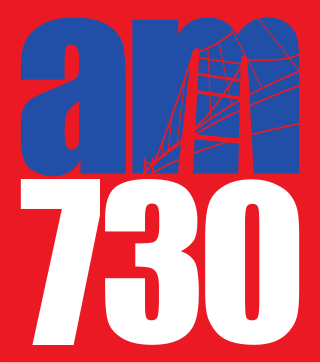
Am730, is free daily Cantonese newspaper published in Hong Kong, the third with the prior two being Headline Daily and Metropolis Daily. Shih Wing-ching, chairman of Centaline Holdings, a property agency, is the founder of the newspaper. He introduced the new paper due to the unprecedented success of Metropolis Daily, a pioneer in this market. Metropolis Daily was founded in 2002, and was so successful that it broke even in only fourteen months. Realising the profitability of the market, Shih established am730 in late July 2005.
The Daily News, originally the Palo Alto Daily News, is a free newspaper owned by MediaNews Group and located in Menlo Park. Founded in 1995, it was formerly published seven days a week and at one point had a circulation of 67,000. The Daily News is distributed in red newspaper racks and in stores, coffee shops, restaurants, schools and major workplaces. As of April 7, 2009 the paper ceased to be published as The Palo Alto Daily News and was consolidated with other San Francisco Peninsula Daily News titles; it published five days a week, Tuesday through Saturday. Weekday editions were delivered to selected homes. While continuing to publish daily online, The Daily News cut its print edition back to three days a week in 2013, and one day a week in 2015.

Métro was a French-language free daily newspaper published in Montreal, Quebec, Canada. The paper is wholly owned by local businessman Michael Raffoul who owns print media distribution company Transmet. Journal Metro is part of the Metro Media group which owns several local newspapers in Montreal. Journal Métro Montréal was formerly part of the international group of newspapers Metro International.

The Daily Press Inc. is a daily morning newspaper published in Newport News, Virginia, which covers the lower and middle Peninsula of Tidewater Virginia. It was established in 1896 and bought by Tribune Company in 1986. Current owner Tribune Publishing spun off from the company in 2014. In 2016, The Daily Press has a daily average readership of approximately 101,100. It had a Sunday average readership of approximately 169,200. Using a frequently used industry-standard readership of 2.2 readers per copy, the October 2022 readership is estimated to be 38,000. It is the sister newspaper to Norfolk's The Virginian-Pilot, which was its southern market rival until Tribune's purchase of that paper in 2018; the papers have both been based out of the Daily Press building since May 2020.

WSJ Magazine is a luxury glossy news and lifestyle monthly magazine published by The Wall Street Journal. It features luxury consumer products advertisements and is distributed to subscribers in large United States markets. Its coverage spans art, fashion, entertainment, design, food, architecture, travel and more. Kristina O'Neill was Editor in Chief from October 2012 to 2023. Sarah Ball, previously Style News Editor, became Editor in Chief in June 2023. Launched as a quarterly in 2008, the magazine grew to 12 issues a year for 2014. It was originally intended to be a monthly magazine named Pursuits.

A newspaper is a periodical publication containing written information about current events and is often typed in black ink with a white or gray background. Newspapers can cover a wide variety of fields such as politics, business, sports, art, and science. They often include materials such as opinion columns, weather forecasts, reviews of local services, obituaries, birth notices, crosswords, editorial cartoons, comic strips, and advice columns.

tonight was a free afternoon newspaper in Toronto, Ontario, Canada, founded in 2009 and acquired by Annex Business Media in 2013. Targeted at evening public transit commuters on GO Transit and TTC, its main distribution channels were through the use of newsies, newspaper boxes and PATH billboards throughout Toronto's downtown core, and through newspaper boxes across the TTC. The publication name was originally stylized with periods as t.o.night - a tongue-in-cheek reference to Toronto. The newspaper was unique in Canada, with its magazine size and format, making for easy transit reading.
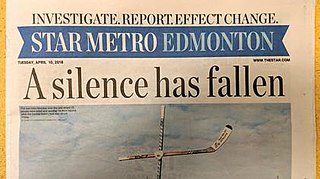
StarMetro was a chain of Canadian free daily newspapers published in Calgary, Edmonton, Halifax, Toronto, and Vancouver. The chain was a joint venture between the Canadian publishing conglomerate Torstar and Swedish global media company Metro International. The chain was originally branded as Metro prior to rebranding on April 10, 2018. StarMetro was not affiliated with the French-language Métro newspaper published by TC Transcontinental in Montreal.
















